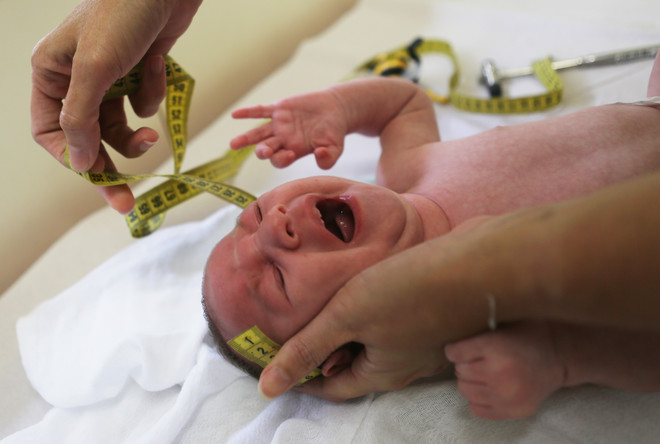 When should the fontanel overgrow? Photo: Getty
When should the fontanel overgrow? Photo: Getty
When should the fontanelle grow
The fontanel on the head of a newborn is calleda soft area of the skull covered with unossified cartilaginous tissue. Its hardening is called fontanelle closure. Although we see one fontanelle on the head of a newborn - the frontal fontanelle, in fact there are only 6 of them. The small occipital and four temporal fontanelles usually close by the time of birth or during the first month of life. The role of the large frontal fontanelle is to protect the baby's head from damage during passage through the birth canal and to allow the brain to fully develop, without limiting it to the hard bones of the skull, at least at the first stage of a person's life. In addition, the large fontanelle is involved in the thermoregulation of the brain. Over time, the process of natural regulation is established and the frontal fontanelle closes by the 12th-18th month of life. But all periods are strictly individual. Late or early closure may be normal for a particular baby. The condition and size of the fontanelle are monitored by the local doctor.
What to do if the fontanel badly grows
If the question is about the slow tightening of the fontanelleworries - contact a neurologist. He will examine the baby, if necessary, conduct an ultrasound of the brain and dispel your doubts. If after the tests the doctor found violations, they can be a consequence of: - genetic predisposition - the most harmless reason that does not give rise to serious concerns; - rickets or lack of solar vitamin D, which directly affects the calcium content in the body. Its absence affects the quality of the child's bone tissue. Curvature of the legs leads to a change in gait. In this case, prophylactic intake of vitamin D is prescribed; - hydrocephalus - excess cerebrospinal fluid in the brain. In this case, intracranial pressure increases, the functioning of the vessels of the fundus is disrupted. The child sleeps poorly, tearfulness, signs of muscle dystonia appear. A rapid increase in head size with the likelihood of divergence of the cranial sutures is noted. Slow tightening of the fontanelle cannot be a 100% symptom of any disease. Its shape should be monitored, but it is better to pay attention to changes in the size of the head. See also:









